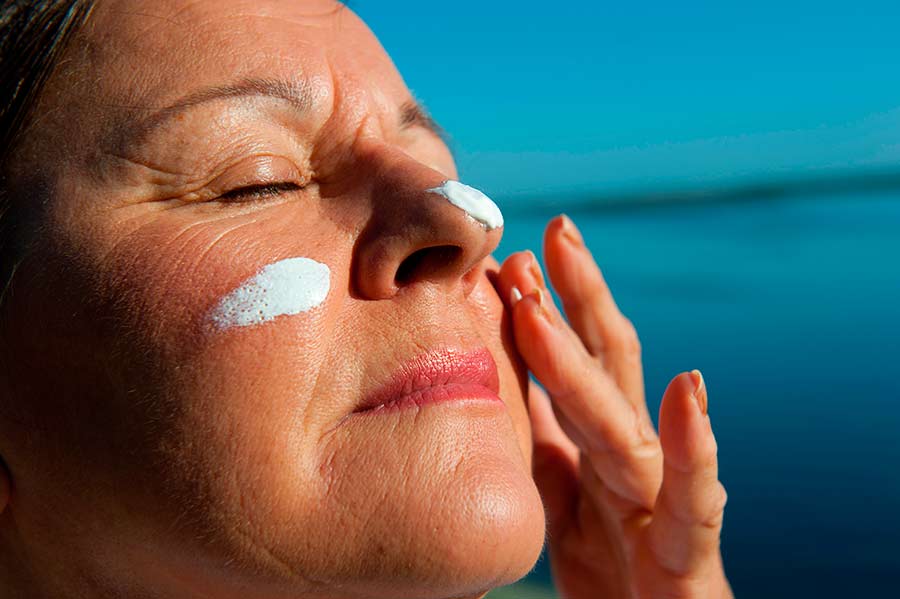Sun exposure is one of the primary factors contributing to skin damage, leading to various issues such as premature aging, sunburn, and an increased risk of skin cancer. However, with the right knowledge and practices, it’s possible to repair existing damage and protect your skin from further harm. In this article, we’ll explore effective solutions for repairing sun damage and establishing a robust sun protection routine to maintain healthy, radiant skin.
Understanding the Impact of Sun Exposure on Your Skin
Sun damage, primarily caused by prolonged exposure to ultraviolet (UV) radiation, leads to visible and microscopic harm to the skin. The American Academy of Dermatology notes that most sun damage results from daily exposure rather than isolated sunburns, making it a cumulative concern.
Key types of sun damage include acute sunburns, premature aging (photoaging), and hyperpigmentation, like sun spots. Sunburns are the immediate sign, while UV exposure over time breaks down collagen, leading to wrinkles and uneven skin texture. Hyperpigmentation results from melanin overproduction due to UV exposure.
The long-term effects of sun exposure, especially the increased risk of various skin cancers including melanoma, are significant. The American Cancer Society emphasizes that UV radiation is a major risk factor for different types of skin cancer.
Protection strategies involve using products with sun protection factor (SPF), wearing protective clothing, and behavioral changes like seeking shade.
The Early Warning Signs: Detecting Sun Damage Before It Worsens
In our previous discussion, we uncovered the causes and types of sun damage, emphasizing the critical role of protective measures and treatment options. Shifting our focus, we will now discuss the early signs of sun damage, crucial for prompt intervention and mitigation of long-term effects.
Early Indicators of Sun Damage Include
- Changes in Skin Texture: Look for increased roughness, dryness, or a leathery texture.
- Discoloration: Notice the emergence of brown spots, dark spots, liver spots, or uneven skin tone.
- Fine Lines and Wrinkles: Particularly around sun-exposed areas like the face and neck.
- Skin Tone Variations: Redness and broken capillaries in light skin tones; more noticeable hyperpigmentation in darker skin tones.
The Importance of Early Detection
- Reducing Skin Cancer Risk: Early intervention can significantly lower the risk of developing skin cancer, including melanoma.
- Maintaining Skin Health: Regular skin examinations help in spotting these symptoms promptly.
Key Protective Measures
- Comprehensive Skin Care Routine: Incorporate broad-spectrum sunscreen, protective clothing, and skin care products like alpha-hydroxy acids.
- Regular Dermatological Check-Ups: Especially important for those with a history of significant sun exposure or skin cancer.
- Consistent SPF Application: An essential step in daily skincare routines.
Revitalizing Your Skin: Combatting Sun Damage with Cutting-Edge Treatments
Following our exploration of the early signs and symptoms of sun damage, we now turn our attention to the various treatment options available. Addressing sun-damaged skin is crucial not only for aesthetic reasons but also to prevent further health risks, such as skin cancer. The effectiveness of these treatments varies based on the extent of sun damage and the individual’s skin type. For instance, laser treatments might offer more dramatic results in cases of severe UV damage, whereas topical treatments are often sufficient for milder cases.
Topical Creams and Serums: These include products containing alpha-hydroxy acids, glycolic acid, and hyaluronic acid which help in skin exfoliation and rejuvenation, reducing the appearance of age spots and fine lines.
Chemical Peels: Performed by professionals, chemical peels remove the damaged outer layers of skin, promoting collagen production and smoother skin texture.
Laser Treatments: Laser skin resurfacing is highly effective in treating sun spots, uneven skin tone, and other signs of unprotected sun exposure by targeting the deeper layers of skin.
Radiofrequency (RF) Treatments: RF therapy uses radio waves to heat the deeper layers of the skin, triggering collagen production and tightening for a lifted and more youthful look.
Microneedling: Utilizing fine needles to create controlled micro-injuries in the skin, microneedling stimulates collagen production and can improve the texture and tone of sun-damaged skin.
Final words
In conclusion, recognizing the damaging effects of sun exposure on the skin is vital for maintaining skin health and preventing long-term consequences such as premature aging and skin cancer. By identifying the early signs of sun damage and adopting effective protective measures, individuals can minimize the risks associated with UV radiation.
For personalized skincare solutions and expert guidance on sun damage prevention and treatment, schedule your appointment with M Health and Beauty Med SPA. Our experienced professionals are dedicated to helping you achieve and maintain healthy, radiant skin. Don’t wait until it’s too late—take proactive steps to safeguard your skin’s health today.


